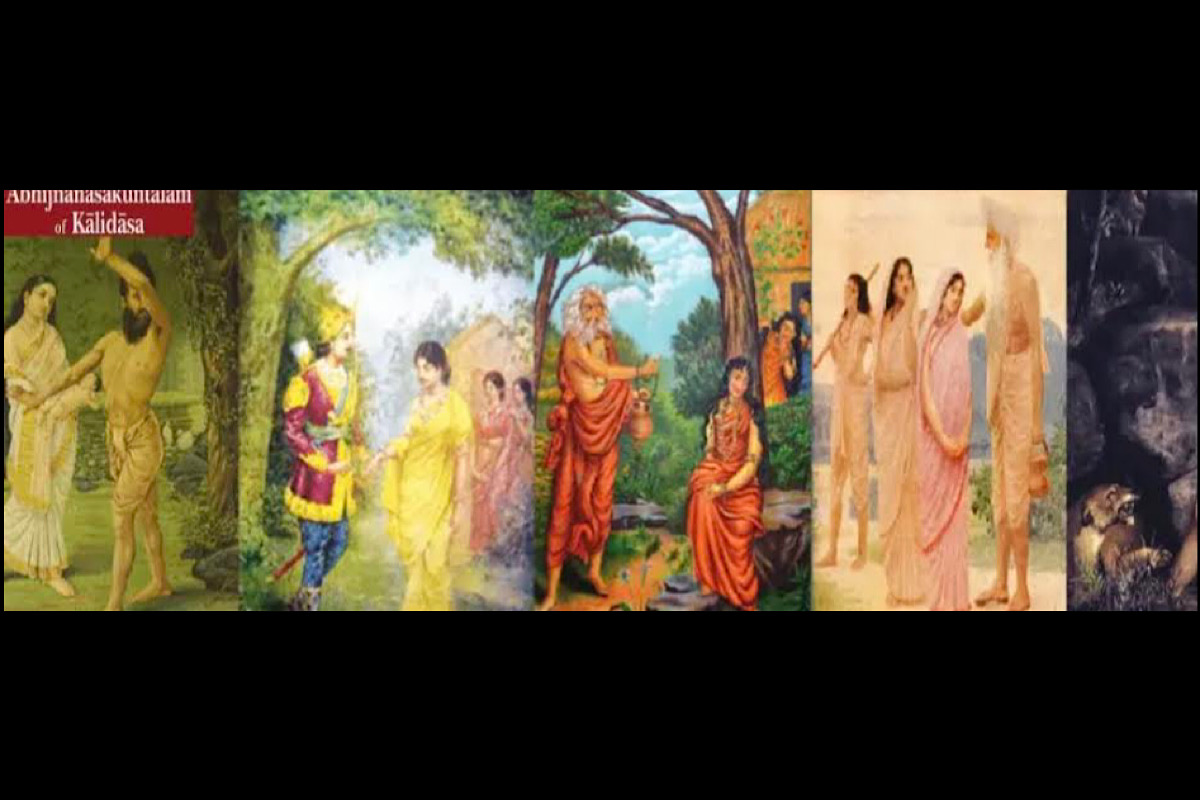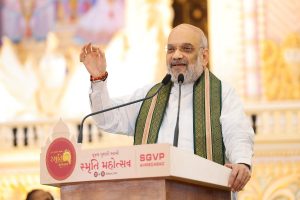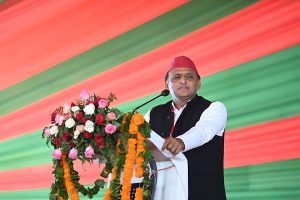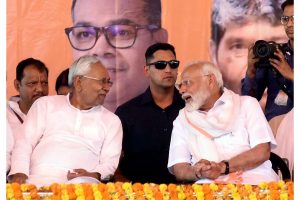In recent years, the phrase “the Idea of India”, as a concept, a theory or a slogan, has been popularized amongst political ideologues, intellectuals and left-leaning historians. Books and articles have also been written advancing individual ideas about the core values of our motherland.
Attempts have been made to define and re-define Hinduism and Hindutva and how Mother India looked in the past, how she manifests herself at present and how she should shape in future.
Political parties are vying with each other to adopt an ideology which would give them the maximum gains in electoral politics. Swords are out for a battle to fight out ‘the clash of ideas.’
None of the leftist, centrist and rightist versions of ‘the idea of India’ will pass the test of credibility and authenticity simply because all of them are born out of political compulsions of electoral gains, which only exacerbate the caste and communal divide ignoring the core values, ethos, heritage, history and culture of the great Indian civilization.
The world has seen the rise and fall of many magnificent civilizations. The most notable cradles of civilizations have been: 1. Mesopotamian (8000- 2000 BCE: 6000 years),
2. Ancient Egypt (3100-30 BCE: 3000 years),
3. Ancient India (3000-1700 BCE: 1300 years),
4. Ancient China (6000-1750 BCE: 4250 years),
5. Caral-Supe civilization of the Andes-Coastal Peru: 5000 years old, 6. Olmec Civilization of Mexico (1600-350 BCE:1250 years),
7. Greek Civilization (1299- 323 BCE till the death of Alexander: about1000 years), and 8. Roman Civilization (625 BCE–476 CE: about 1000 years).
It has been the greatest tragedy in human history that all the great civilizations excepting the Chinese and the Indian, were obliterated from the face of the Earth either by apocalyptic natural disasters or by marauding invaders. In the latter case, especially for ancient Asia Minor, the Middle East and the North African civilizations, waves of invasions, initially for looting and plundering but converted later into religious crusades, destroyed their art, architecture, heritage, culture, seats of learning and places of worship forcing them into total submission and conversion to the new religion.
It is a cruel irony of history that invariably, a highly developed and civilized culture was supplanted by an inferior civilizational culture of the barbarians who destroyed everything including their gods and goddesses.
The beautiful statues of Greek and Roman gods and goddesses were razed to the ground. In China, the Communists, and not the invaders, banned and banished them from their land. It is only in India that the mythical gods and goddesses are still living in full glory and are still being worshipped with the chanting of the original Vedic mantras.
Of the two surviving and continuing civilizations, the Chinese has been the least affected by invasions and they had an uninterrupted monarchy protecting their vast territories for nearly 4000 years (2070 BCE-1912 CE). While they didn’t have an organized religion of their own, they followed folklore, and a mixture of the teachings of Lao Tse, Confucious and Buddha. China excelled in military art, warfare, crafts and technological inventions (like paper, printing etc.), which gave them prosperity.
But China had never seen the kind of flowering of art, culture, architecture, literature, science and religious reforms as witnessed in ancient India. China, through their scholars, took all knowledge from India but gave back nothing of their secrets to India.
Owing to the lack of proper documentation and recorded history, the glorious achievements of ancient India in various fields were shrouded in mystery and almost went into oblivion till Sir William Jones (1746-1794), a British philologist and a radical political thinker came to Calcutta and established the Asiatic Society in January 1784 and told the world how great the Indian civilization was. Entranced by Indian culture, this puisne judge of the Supreme Court of Judicature at Fort William studied the Vedas and Sanskrit and became a scholar of ancient India and a top Orientalist (expert in Indo-Aryan languages) in his short life.
Later, the discovery of the Indus Valley civilization by the archeologists of the Archeological Survey of India ~ Harappa (by Dayaram Sahni), Mohenjo-Daro (by Rakhal Das Banerjee) and 62 ancient sites in Sind (by Nani Gopal Majumdar, who was shot dead near his camp by bandits) ~ dispelled all doubts about the antiquity of Indian civilization.
William Jones was the first person to showcase to the world the ancient civilization and rich heritage of India. Till then, the Europeans and the New World had no idea about ancient India which was for them a land of mystics, snakes and rope tricks and an “area of darkness.” Western historians like the French doyen, Fernand Braudel, and British historians including Arnold Toynbee had lots of negativities about India.
Indian historians like Romila Thapar and Sumit Sarker who saw Indian history through British and Marxist eyes had written history in a manner which had the effect of distorting the truth about India. It is A L Basham (1914-1986), a British-Australian Sanskritist historian of India (who married an Indian and died in India), who dispelled the negativities spread by Western historians and proved with concrete evidence how great Indian civilization was ~ the most wonderful civilization on Earth. Basham’s classic work ‘The Wonder That Was India’ (Sidgwick & Jackson, London 1954) still remains the most vivid and authentic account of ancient India highlighting the political, social, economic, cultural and literary achievements during the reigns of the enlightened kings. Basham’s subsequent treatises on Indian culture and religions have offered authoritative explanation of various aspects of the Indic civilization. After the Vedic period (1700- 900 BCE), ancient India had witnessed at least three renaissances, very similar to the renaissance of ancient Greece and later modern day Italy. These were: a. The Epic Period (900- 520 BCE); b. The Glorious Maurya period (320 -200 BCE); and c. The Golden Gupta period (300-BCE-500 CE). The Epic Period and the preceding period saw the development of the two oldest languages of the world ~ Tamil and Sanskrit. Many scholars claim that Tamil is older than Sanskrit.
The controversy is meaningless because as pointed out by Sri Aurobindo in his The Secret of the Veda, the two languages were contemporary as evidenced by the fact that a large number of Sanskrit words have found their way in Tamil. Sanskrit, which is considered to be the most perfect language in the world, is the mother of all Indian languages (except Tamil) and other Indo-Aryan languages like German.
The people who constructed the Sanskrit language and its grammar, and composed the four Vedas, the Upanishads (108), the Puranas (18), the Panchatantra, the Ramayana and the Mahabharata including the Bhagavat Gita must have been super-humans having astonishing skills, some believe divine skills. The Ramayana and the Mahabharata, the greatest epics of all time, remain the greatest treasure of the ancient world and the Gita the greatest philosophical text. German philosopher Arthur Schopenhauer was highly impressed with the spiritual knowledge of the Upanishads and said that it is “the most profitable and elevating reading which … is possible in the world.”
In addition, ancient India had ten Schools (Astika and Nastika) of philosophical thought. During this period, Gautama Buddha (563-483 BCE), with his philosophy of non-violence, peace and compassion (Ashtamarg or Noble Eight-fold Path) changed the world forever.
The Mauryan period is marked by the advent of Buddhism, great personalities like Chandragupta Maurya and Chanakya or Kautilya (who wrote Arthashstra) and the glorious reign of Ashoka the Great, who spread the message of non-violence and peace throughout the world.
Emperor Ashoka (304-232 BCE), who embraced Buddhism after the deadly Kalinga war, had been one of the greatest kings of the world who ruled with the principles of non-violence, peace and social welfare. His empire covered large parts of the sub-continent stretching from Afghanistan in the West to the eastern boundaries of Bengal.
His emissaries including his own daughter Sanghamitra carried the message of peace and love and spread Buddhism to Sri Lanka, Afghanistan, Tibet, China, Korea, Japan, Vietnam, Laos, Cambodia, Myanmar and Indonesia.
The famous Ashoka edicts at various places tell the moral principles of his administration. The Ashoka Iron Pillars which have not collected rust even after 2,000 years demonstrate the excellence of metallurgical industry of the era.
One of the world’s oldest universities, Takshashila or Taxila (5th century BCE to 5th century CE) reached great heights, especially in Buddhist studies during the Mauryan Empire. During the Gupta period, known as the Golden Age of Indian history, the Indian civilization reached its pinnacle.
It witnessed a renaissance similar to what happened in Greece during the same time and whether there was any connection between the two is not known.
The reign of Vikramaditya, famous for his Nava Ratna council at his capital Ujjain, produced a galaxy of geniuses in art, culture, literature, astronomy, mathematics and science.
Poet and dramatist Kalidasa, known as the Indian Shakespeare, produced Sanskrit plays of incomparable beauty which amazed the West. Johann Wolfgang Goethe, the German poet and dramatist was so enamoured with Kalidasa’s Abhijnanasakuntalam that he used it for his famous play The Faust. In a poem, he said (1791): “If you wish to see the young flowers spring and ready to pick fruits of summer at once or if you wish to see that object which pleases, hypnotizes, delights and quenches you at once or if you wish to see the earth and heaven in one look, I invoke the name of Shakuntala and all quests are answered at once.” Goethe felt that nothing like Shakuntala existed in world literature.
(The writer is a former Dy. Comptroller &Auditor General of India and a former Ombudsman of Reserve Bank of India. He is also a writer of several books and can be reached at brahmas@gmail.com)











